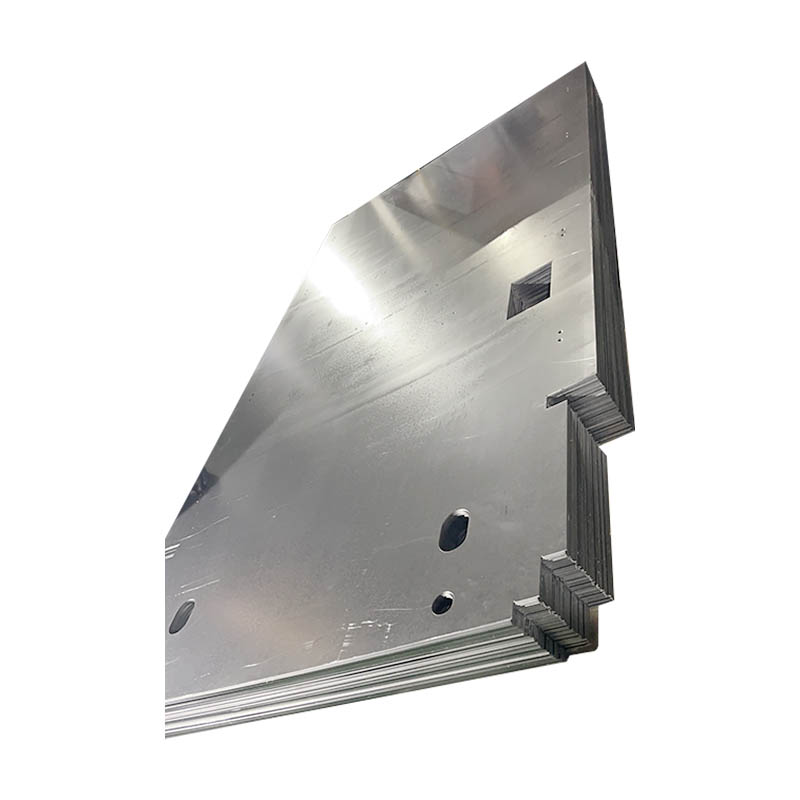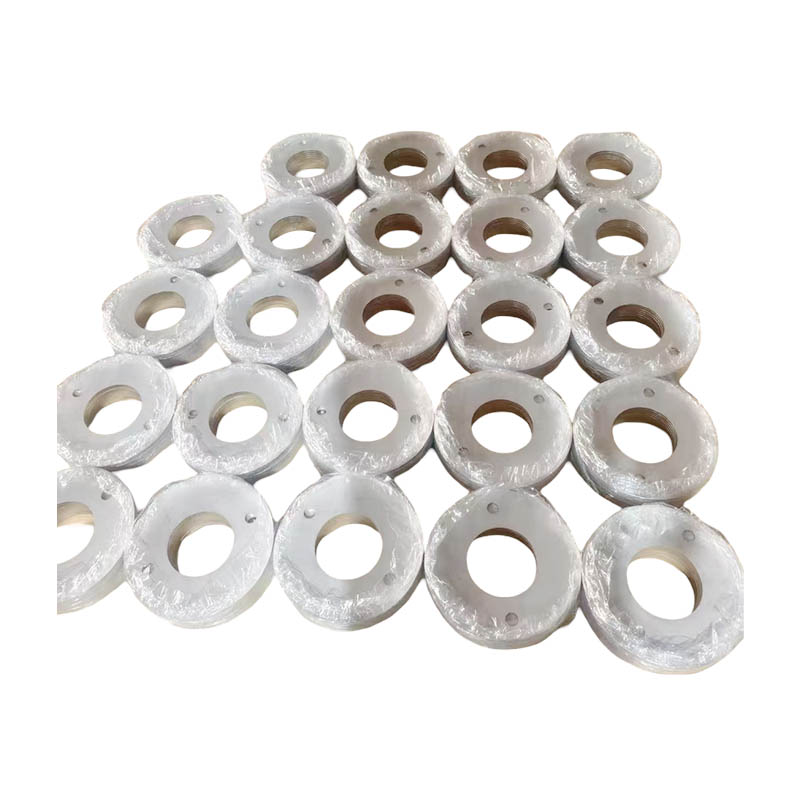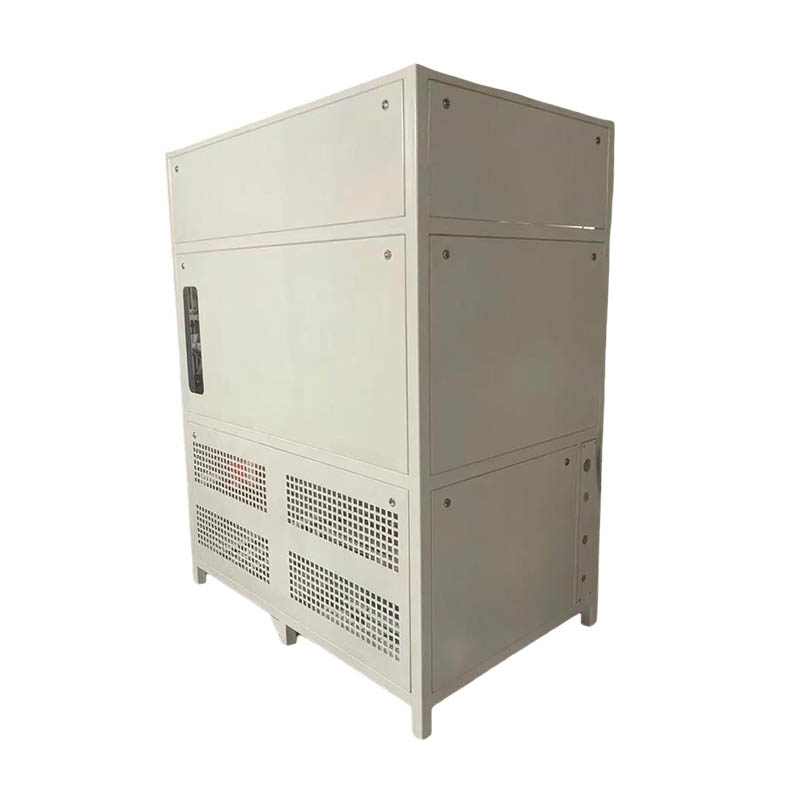How does the weldability of carbon steel sheet metal improve production efficiency?
Release Time : 2025-08-14
In modern industrial manufacturing, building structures, pressure vessels, shipbuilding, and mechanical equipment production, steel is one of the most widely used structural materials. Among various steel types, carbon steel sheet metal, due to its excellent mechanical properties, stable chemical composition, and exceptional process adaptability, has become the preferred material for various welded structural components. Excellent weldability is one of carbon steel sheet metal's most prominent advantages. It not only ensures the quality and reliability of welded joints but also plays a key role in improving overall production efficiency.
1. Wide Welding Process Adaptability, Compatible with Various Welding Methods
Carbon steel sheet metal has a wide range of welding adaptability. Whether using efficient gas shielded welding on automated production lines or manual welding in on-site construction, carbon steel can achieve excellent fusion and formability. This process compatibility allows companies to flexibly select welding methods based on product structure, production scale, and cost requirements, eliminating the need to adjust process routes due to material limitations, significantly improving production flexibility and efficiency.
2. Stable welding process, reduced defects, and improved first-pass yield
The chemical composition (especially carbon equivalent) of high-quality carbon steel sheet metal is strictly controlled, making it less susceptible to common defects such as cracks, pores, and slag inclusions during welding. Its excellent metallurgical properties ensure a good bond between the weld metal and the base metal, with stable microstructure in the heat-affected zone and high joint strength. This significantly reduces weld rework rates in actual production, reducing downtime and material waste caused by repair welding, grinding, and flaw detection failures, thereby improving overall production speed and product delivery.
3. Eliminating the need for complex preheating and post-heat treatment shortens production cycle times
Compared to high-carbon or alloy steels, low-carbon and medium-carbon steels (especially low-carbon steel) typically require no preheating or only low-temperature preheating when welding within a typical thickness range. Complex post-weld heat treatment (such as annealing or normalizing) is also generally unnecessary. This not only simplifies the process but also saves on heating equipment, energy consumption, and waiting time. For example, in the manufacture of steel structures, pressure vessels, and construction machinery, carbon steel sheet metal enables continuous welding and rapid assembly, significantly shortening the production cycle from cutting to finished product.
4. Supports Automation and Efficient Welding, Boosting Productivity
The stable weldability of carbon steel sheet metal provides a solid foundation for automated welding. On efficient production lines such as robotic welding and automatic submerged arc welding, carbon steel enables high-speed, continuous, and high-quality welding. Its high tolerance for welding parameters (current, voltage, and speed) makes welding failures less susceptible to minor fluctuations, ensuring the stable operation of automated systems. This not only significantly increases weld length and product output per unit time, but also reduces reliance on highly skilled welders and lowers labor costs.
5. Easily achieves multi-layer, multi-pass welding of thick plates, meeting the needs of large structures.
Medium-thick and even thick carbon steel plates are often required in projects such as bridges, ships, and large storage tanks. This type of sheet metal can achieve full penetration through multi-layer, multi-pass welding. Carbon steel's excellent weldability ensures a secure bond between each weld bead, facilitates interpass cleaning, and reduces the risk of incomplete fusion or interlaminar cracking. Furthermore, its moderate thermal conductivity facilitates uniform heat dissipation, reduces localized overheating and deformation, and improves the overall dimensional accuracy and assembly efficiency of large components.
In summary, carbon steel sheet metal, with its excellent weldability, demonstrates significant advantages in welding process adaptability, weld quality stability, streamlined production processes, automation compatibility, and a wealth of supporting resources. These advantages effectively reduce welding preparation time, lower rework rates, and enhance automation levels, ultimately significantly improving overall production efficiency. In modern manufacturing, which strives for high quality, high efficiency, and low costs, choosing carbon steel sheet metal with excellent weldability is not only a wise technical approach but also a crucial factor in enhancing a company's competitiveness.
1. Wide Welding Process Adaptability, Compatible with Various Welding Methods
Carbon steel sheet metal has a wide range of welding adaptability. Whether using efficient gas shielded welding on automated production lines or manual welding in on-site construction, carbon steel can achieve excellent fusion and formability. This process compatibility allows companies to flexibly select welding methods based on product structure, production scale, and cost requirements, eliminating the need to adjust process routes due to material limitations, significantly improving production flexibility and efficiency.
2. Stable welding process, reduced defects, and improved first-pass yield
The chemical composition (especially carbon equivalent) of high-quality carbon steel sheet metal is strictly controlled, making it less susceptible to common defects such as cracks, pores, and slag inclusions during welding. Its excellent metallurgical properties ensure a good bond between the weld metal and the base metal, with stable microstructure in the heat-affected zone and high joint strength. This significantly reduces weld rework rates in actual production, reducing downtime and material waste caused by repair welding, grinding, and flaw detection failures, thereby improving overall production speed and product delivery.
3. Eliminating the need for complex preheating and post-heat treatment shortens production cycle times
Compared to high-carbon or alloy steels, low-carbon and medium-carbon steels (especially low-carbon steel) typically require no preheating or only low-temperature preheating when welding within a typical thickness range. Complex post-weld heat treatment (such as annealing or normalizing) is also generally unnecessary. This not only simplifies the process but also saves on heating equipment, energy consumption, and waiting time. For example, in the manufacture of steel structures, pressure vessels, and construction machinery, carbon steel sheet metal enables continuous welding and rapid assembly, significantly shortening the production cycle from cutting to finished product.
4. Supports Automation and Efficient Welding, Boosting Productivity
The stable weldability of carbon steel sheet metal provides a solid foundation for automated welding. On efficient production lines such as robotic welding and automatic submerged arc welding, carbon steel enables high-speed, continuous, and high-quality welding. Its high tolerance for welding parameters (current, voltage, and speed) makes welding failures less susceptible to minor fluctuations, ensuring the stable operation of automated systems. This not only significantly increases weld length and product output per unit time, but also reduces reliance on highly skilled welders and lowers labor costs.
5. Easily achieves multi-layer, multi-pass welding of thick plates, meeting the needs of large structures.
Medium-thick and even thick carbon steel plates are often required in projects such as bridges, ships, and large storage tanks. This type of sheet metal can achieve full penetration through multi-layer, multi-pass welding. Carbon steel's excellent weldability ensures a secure bond between each weld bead, facilitates interpass cleaning, and reduces the risk of incomplete fusion or interlaminar cracking. Furthermore, its moderate thermal conductivity facilitates uniform heat dissipation, reduces localized overheating and deformation, and improves the overall dimensional accuracy and assembly efficiency of large components.
In summary, carbon steel sheet metal, with its excellent weldability, demonstrates significant advantages in welding process adaptability, weld quality stability, streamlined production processes, automation compatibility, and a wealth of supporting resources. These advantages effectively reduce welding preparation time, lower rework rates, and enhance automation levels, ultimately significantly improving overall production efficiency. In modern manufacturing, which strives for high quality, high efficiency, and low costs, choosing carbon steel sheet metal with excellent weldability is not only a wise technical approach but also a crucial factor in enhancing a company's competitiveness.







